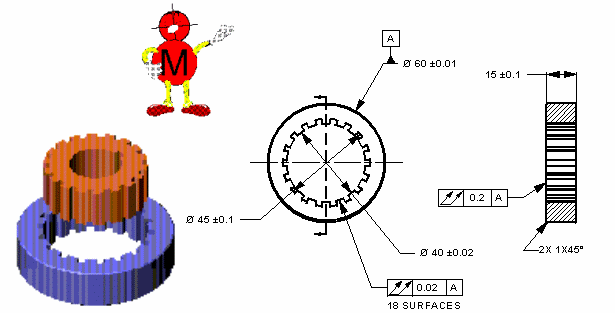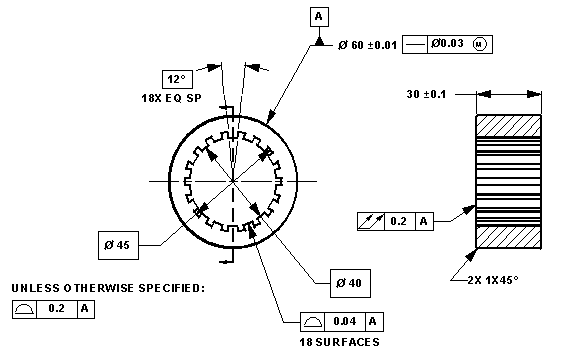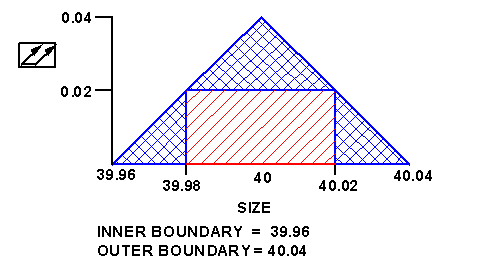| Use
Profile to Open up Your Tolerances
Profile of a surface is the most
versatile yet one of the least used of the geometric
tolerances. The next few tips will illustrate some of the
power of profile of a surface. On the part shown below, the 18
teeth must be controlled to assure that the teeth do not
interfere with the mating part and make certain that the
clearance between the parts not be too great. Originally, the
part was controlled using a tight size tolerance and a total
runout tolerance. The real concern here is that the inner and
outer boundaries not be exceeded. Using the original approach,
the inner and outer boundaries are 39.96 and 40.04
respectively. This is illustrated in the dynamic tolerancing
diagram chart.
|

|
|

|
|
By making the size
dimension basic and applying a profile of a surface
tolerance of 0.04, more parts will be accepted while not
violating the inner and outer boundaries. On the chart
below, the crosshatched rectangular area shows the range
of acceptable parts based on the original drawing. The
double crosshatched triangular areas indicate the
additional tolerance allowed by profile of a surface.
Notice that the inner and outer boundaries required for
this part to function did not change. The tolerance has
essentially doubled by switching to profile of a
surface. In this actual application, the supplier was
not able to meet the required process capability (Cpk)
using the original drawing. After making the drawing
change, the vendor had no problem delivering acceptable
parts to the required Cpk. |
|

|
|

| |